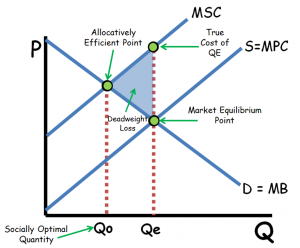The more time we spend at UPS, the more obvious patterns of student behavior become. Among these behaviors is the congestion of the SUB at predictable times of day. As such, the following question is worth asking: Might there be an economic solution to the long SUB lines at certain times? Waiting is a cost, and economic theory has a lot to say about dealing with such inefficiencies.
Consider everything that comes with getting lunch at noon. Bodies fill up the diner, all the best food options have what seems like a mile-long line, it takes longer than usual to pay (after you’ve wasted fifteen seconds gauging which checker has the shortest line), and once you have jumped through all the hoops, there is nowhere to sit. This is an unfortunate state of affairs that imposes non-monetary costs. The below is intended not to advocate, but to make us think.
What say the classical economist? We ought to tax waiting to find a social optimum. That is, at the most crowded times of day, the SUB should raise its prices. If our demand for food at noon (or any other specific time) is elastic, higher prices should make us, the customers, less desirous. In theory (if we ignore the common hour), more of us would schedule classes such that we could get cheaper food. This is perfectly sound logic on the supply side of things – tax the inefficiency until it goes away. In fact, this idea is not unlike Uber surge pricing. The debate comes when we discuss how this would look in practice.
Many students have bigger meal plans than they can handle. For them, this would probably not affect their habits and would make them feel better about themselves for using more of their plan, instead of having to buy the entire C-Store (or donate dining dollars) at semester’s end. Others would probably complain about being penalized for eating at normal times. For these reasons, this idea may not be tenable on a college campus; still, these steep wait times definitely feel like a market failure that ought to be discussed.
Below is a general depiction of raising prices to offset some of the cost imposed by waiting.

